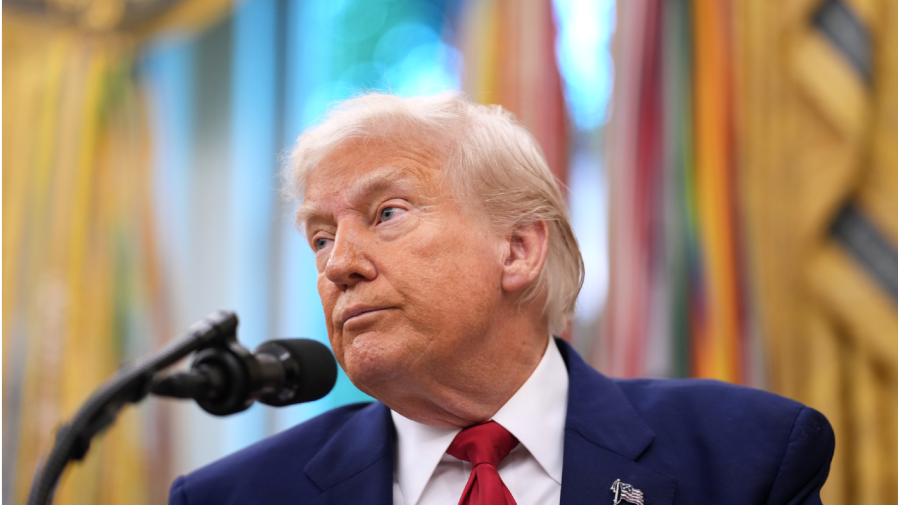
After President Trump announced sweeping global tariffs on Apr. 2, businesses scrambled to learn how the policies would impact them and lobbied for exceptions for their products. Nearly one month later, many have struggled to get answers and remain concerned about the tariffs’ potential effects.
However, at least a few businesses have communicated directly with the president himself. On Apr. 21, representatives from Home Depot, Target, Walmart and other major retailers met with President Trump at the White House to push their perspectives.
Who else has attended White House meetings to plead their cases on the tariffs? More broadly, who else has visited the White House to talk to Trump and his staff about the administration’s policies?
In almost every case, we don’t know.
In past administrations, the White House published the names of each person who visited. For instance, the Biden White House published nearly 1.8 million visitors’ names. However, each president decides whether to release these visitor logs. And when he took office in January, Trump stopped publishing them.
As a result, we now only learn about who visits when the White House or the visitors themselves tell us, as did the retailers who met with President Trump.
Consequently, we don’t know who most of the people outside of government are who advise the Trump White House on its policy initiatives.
Why should we care who these visitors are? The president is the only nationally elected political leader. We expect him to represent the national interest.
Knowing who visits the White House helps us see whose views the president considers when making decisions. The public can then use this information to hold presidents accountable if they ignore important voices in society.
In my research, I use the Clinton and Obama administrations’ visitor logs to examine which interest groups visit the White House. I find that groups with more financial resources and who affiliate with the president’s party are more likely to visit. This suggests that, perhaps unsurprisingly, presidents give more weight to the perspectives of wealthy and partisan allies.
But here’s what matters more: Knowing who the president talks with gives the public opportunities to demand that he listen to a broader cross-section of society.
When leaders hide the names of those they speak with, the public cannot know if some important perspectives are missing. When the public knows who leaders converse with, people can identify biases and demand that those leaders bring those excluded voices into the discussion.
Two policies developed by past administrations show why it is important to know who visits the White House.
Early in his presidency, George W. Bush set up a National Energy Policy Development Group to assess what national energy supplies and infrastructure the U.S. would need in the coming years. The Bush administration kept the names of the individuals it met with as part of this task force secret, even refusing requests from Congress.
Because Bush and many senior officials in his administration worked in the oil industry before he became president, many observers suspected that most of the people the task force talked to represented fossil fuel companies. Sure enough, when these records went public in 2007, they revealed that the vast majority of the 300 individuals and groups the task force met came from oil and gas companies.
Meanwhile, the task force met with only a handful of environmental groups after it had already completed its draft report.
Contrast this with Barack Obama’s work to reform healthcare.
Less than two months after taking office, Obama organized a White House summit on the healthcare system. This summit was not only public, but also included voices from a variety of groups with important perspectives on reform, such as doctors, pharmaceutical companies, unions and patients.
Many later stages of the reform process took place behind closed doors. However, this summit and other open forums enabled all relevant groups to have input in the process and ultimately helped make the Affordable Care Act law.
Americans of all partisan stripes should want to know who visits the White House. Without this information, the public cannot hold presidents accountable for whose views they listen to when making decisions.
But even the visitor logs published by past presidents aren’t enough, as those disclosures only identify who visited. They provide no information about the purpose of each visit. This limits what the public can learn from those records.
As long as presidents control their logs, the public will be hard-pressed to monitor who visits the White House. In the past two Congresses, Rep. Mike Quigley (D-Ill.) introduced legislation to require the White House to disclose its visitors and the reasons they visited. Citizens should demand that their legislators consider this proposal again.
The president and the White House staff wield immense power. This means that people who visit the White House have valuable opportunities to influence policy.
To hold presidents accountable for the range of voices they listen to when making decisions, all Americans should demand more information about who walks through the White House gates.
David Miller is an assistant professor of government at American University. His research uses White House visitor logs to find out with whom presidents meet and the policy and political consequences of those meetings.


